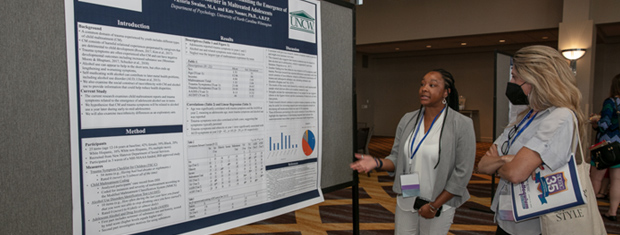




The APSAC Advisor is a peer reviewed quarterly news journal for professionals in the field of child abuse and neglect.
The APSAC Advisor provides succinct, data-based, practice-oriented articles that keep interdisciplinary professionals
informed of the latest developments in policy and practice the field of child maltreatment. It is designed to highlight
best practices in the field and publish original articles and current information about child maltreatment for professionals
from a variety of backgrounds including medicine, law, law enforcement, social work, child protective services, psychology,
public health and prevention in the U.S.
 If you wish to learn more about submitting an article to the Advisor, please click here.
If you wish to learn more about submitting an article to the Advisor, please click here.
This library contains Advisor issues dating back to the first issue in 1988. The most recent issue appears at the top.
Scroll down to select past issues by year and issue number. Once a publication appears in the box, you
can use the Enlarge button to open the document in a new window or tab (depending on how your browser is set up).
This will allow you to view the document with larger print.
To print a document, first use the Enlarge button to open the document in a new window or tab. Then use your browser's Print command.
To return here from a new tab, close the tab. To return from a new window, click your browser's Back button.
In the listing below, click on a year and issue number to see the articles in that publication.
1993 Number 3
Research on False Allegations of Sexual Abuse in Divorce
The statement, "There is an epidemic of false allegations of sexual abuse in divorce cases," is regarded by some as a truism. The argument is that women seeking to win custody of their children, to cut off the father's visitation, or to wreak vengeance on former spouses, falsely accuse them of child sexual abuse.
Allegations of sexual abuse of children are extremely difficult to prove in criminal proceedings. Sometimes the only evidence is the statement of the child victim. Often there is no corroborating evidence, In many of these cases, the offender is not prosecuted because of the lack of evidence and the belief that the offense cannot be proven beyond a reasonable doubt.
Fatal Child Abuse and Sudden Infant Death Syndrome (SIDS): Can We Tell the Difference?
National statistics during 1991 indicated that 1,241 child homicides occurred in the United States. Some contend that this figure is inaccurate and is based on incomplete information, since child fatality investigations are so variable in the many jurisdictions of the country. Others have estimated as many as 5,000 annual cases, but this statistic is likewise subject to questions of validity.
Individual Treatment of the Sexually Abused Child
The current state of knowledge regarding treatment of sexually abused children is simultaneously vast and limited. The knowledge is vast as a result of the many excellent resources published by clinicians who have shared their perspectives on treatment. However, the state of knowledge is limited by the lack of an empirical foundation informing the field about the effectiveness of treatment approaches for reducing behavioral, emotional, and cognitive difficulties associated with sexual abuse experiences.
A Rationale for Cultural Competency
Within many segments of human services, cultural competency has been acknowledged as a critical element of professional expertise. Many professionals remain confused, however, about some of the basic assumptions underlying the quest for cultural competence and terms used to address the issues.
Cultural Diversity and Child Maltreatment
The cultural component of child maltreatment is experiencing a resurgence of interest and attention, largely stimulated by increasing recognition of the necessity of cultural competence for successful and equitable child protection.
Reflections on the U.S. Advisory Board on Child Abuse and Neglect
Upon my completion of a four-year term on the U.S. Advisory Board on Child Abuse and Neglect (twenty-one months of which I served as Chair), I thought APSAC members might be interested in what I look upon as our accomplishments, and our failures, to date.
The purpose of Journal Highlights is to alert readers to current literature on child abuse. Selected articles from journals representing the variety of disciplines reflected in APSAC's membership are presented in the form of an annotated bibliography.
APSAC Advisor 6(3): Full Issue